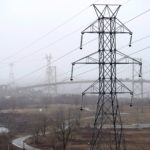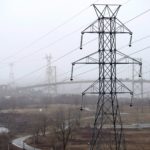Nova Scotia Power seeks 10 per cent rate hike and system to defer green energy costs

HALIFAX — Nova Scotia's power utility is asking for an average general rate increase for residential customers of 9.9 per cent over three years, with possible additional costs due to severe weather and energy efficiency costs.
Nova Scotia Power's increases for large industrial customers would be slightly over 10 per cent, while small and medium business tariffs would go up between 11 and just over 12 per cent over the same three-year time period.
The base rate increases are proposed to take effect in three stages, beginning this August and then on Jan. 1 for the next two years.
The application submitted to the province's Utility and Review Board Thursday also includes a request that the board create a mechanism to spread out the costs of the province's phasing out of coal-fired generation by 2030.
The accelerated depreciation costs for the coal plant closures would be about $370 million, according to estimates provided to reporters on Thursday. However, it's possible the utility can apply to federal and provincial governments to help reduce those costs.
Peter Gregg, the company’s chief executive, told reporters the rate hikes and the deferral of the costs for the shift to renewables — which he referred to as a “decarbonization deferral account” — are needed to help the company embark on the biggest transition in its history.
“We’re taking a system that took us approximately 50 years to build, and the challenge will be to transform that system in less than 10 years,” he said.
Gregg said the rate changes will help the company meet government-regulated targets for cleaner energy, while meeting growing customer demand for electricity.
The details of how Nova Scotia Power would spread out its "decarbonization" program costs over time — and how and when this might impact rates — weren't provided, but Gregg said the winding down of coal-fired plants "is a cost issue that has to be dealt with."
"We believe it (the deferral fund) is a solid solution to deal with any kind of rate shock," he said.
Meanwhile, the potential costs for storm damage and an energy conservation program would become separate lines in customers' bills if approved by the regulator.
In the case of storms, the utility would estimate the potential costs, but if extreme storms caused unforeseen damage, then the power company would be able to apply to the regulator to recover those costs and it would be added to bills, Gregg said.
The utility, a subsidiary of Halifax-based Emera Inc., is asking to keep its nine per cent profit margin as part of its plan, with provision to allow it to earn up to 9.5 per cent return on equity.
"We're not asking for more than we need to run a reliable business that our customers can rely on," said Gregg.
The proposal also calls for a special fee for customers who generate their own power — from sources such as solar and wind — and sell it to the utility.
Gregg said this was because the utility was continuing to bear the costs of a reliable source of power to customers who are generating their own electricity. "It's an issue of fairness .... What we want to avoid is for customers who don't have an ability to generate their electricity to be covering the costs for customers who do have an ability to do it," he said.
This report by The Canadian Press was first published Jan. 27, 2022.
Michael Tutton, The Canadian Press





